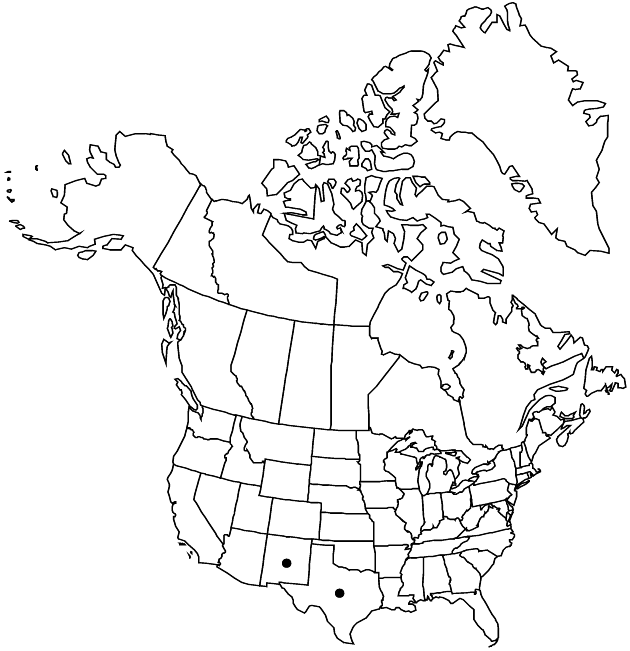Difference between revisions of "Chaetopappa hersheyi"
Proc. Biol. Soc. Wash. 59: 47. 1946.
Common names: Guadalupe lazy daisy
Endemic
FNA>Volume Importer |
imported>Volume Importer |
||
| (6 intermediate revisions by 2 users not shown) | |||
| Line 8: | Line 8: | ||
}} | }} | ||
|common_names=Guadalupe lazy daisy | |common_names=Guadalupe lazy daisy | ||
| + | |special_status={{Treatment/ID/Special_status | ||
| + | |code=E | ||
| + | |label=Endemic | ||
| + | }} | ||
|basionyms= | |basionyms= | ||
|synonyms= | |synonyms= | ||
| Line 32: | Line 36: | ||
-->{{#Taxon: | -->{{#Taxon: | ||
name=Chaetopappa hersheyi | name=Chaetopappa hersheyi | ||
| − | |||
|authority=S. F. Blake | |authority=S. F. Blake | ||
|rank=species | |rank=species | ||
| Line 46: | Line 49: | ||
|publication title=Proc. Biol. Soc. Wash. | |publication title=Proc. Biol. Soc. Wash. | ||
|publication year=1946 | |publication year=1946 | ||
| − | |special status= | + | |special status=Endemic |
| − | |source xml=https:// | + | |source xml=https://bitbucket.org/aafc-mbb/fna-data-curation/src/2e0870ddd59836b60bcf96646a41e87ea5a5943a/coarse_grained_fna_xml/V19-20-21/V20_458.xml |
|tribe=Asteraceae tribe Astereae | |tribe=Asteraceae tribe Astereae | ||
|genus=Chaetopappa | |genus=Chaetopappa | ||
Latest revision as of 21:03, 5 November 2020
Perennials, 1–2(–5) cm, eglandular; taprooted, forming mats from systems of rhizomelike caudex branches. Leaves even-sized, densely overlapping; blades linear to oblanceolate, 3–8 × 0.5–1 mm, coriaceous, bases not clasping (margins ciliate, midnerves strongly raised, longitudinally 2-grooved adaxially), apices spinulose, faces glabrous. Involucres cylindro-turbinate, 4.5–5 × 2.5–4 mm. Ray florets 6–10; corollas white. Disc florets 5–6, bisexual. Cypselae ca. 1.5 mm, 2–3- (ray) or 5- (disc) nerved, strigose; pappi in 2 series, outer of minute scales less than 0.1 mm plus inner of (4–)5(–6) bristles 2–4.2 mm. 2n = 16.
Phenology: Flowering May–Aug.
Habitat: Walls, ledges, and banks, limestone canyons
Elevation: 1500–2400 m
Discussion
Selected References
None.
Lower Taxa
None.
